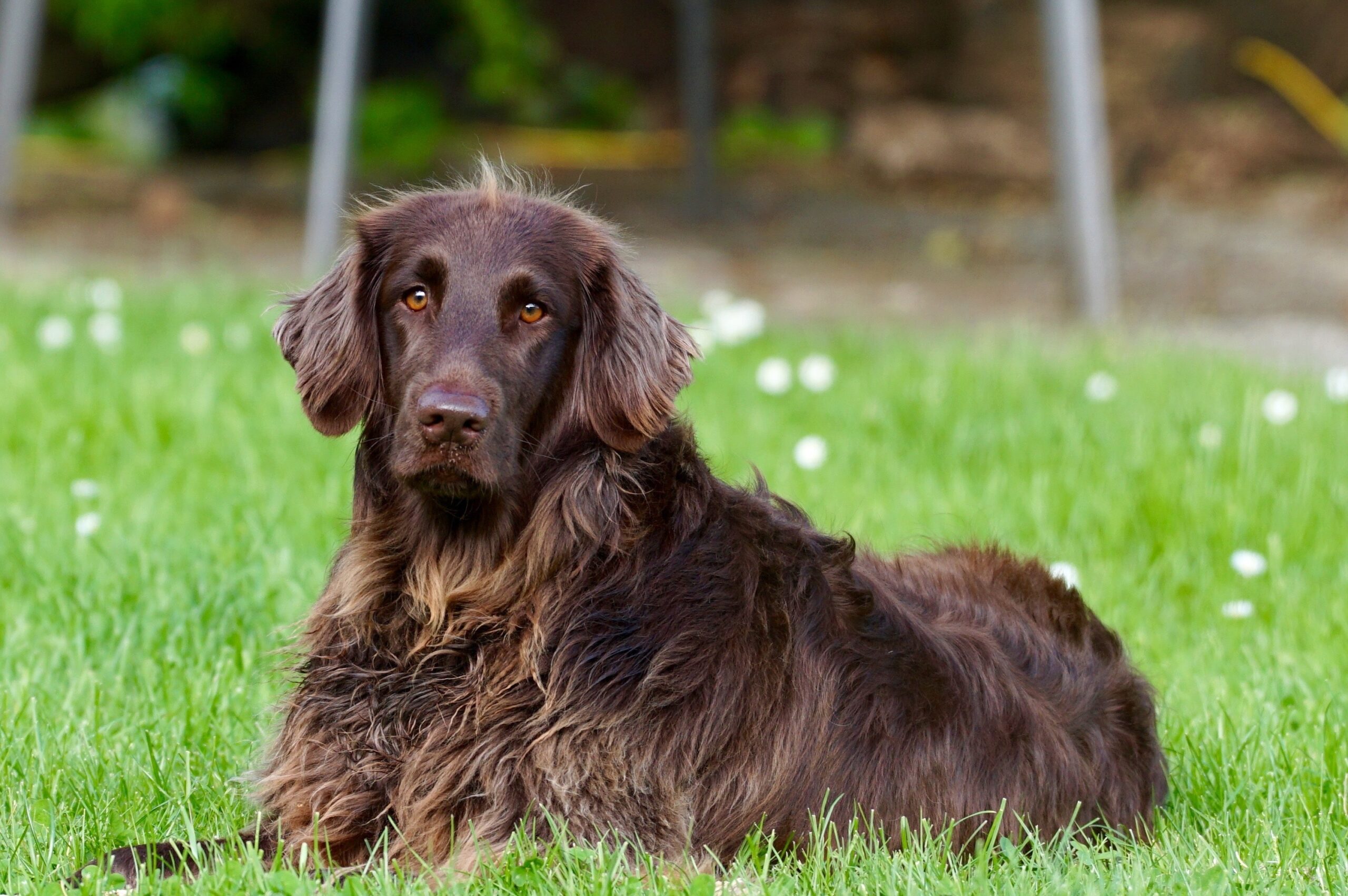The German Longhaired Pointer is a pointing dog with a full tail, a long coat, dense guard hair, and a modest undercoat. Its appearance is best described as Continental Europe’s Setter. The GLP’s affinity for swimming and waterfowl hunting is one notable distinction. German Shorthaired Pointer-like markings are reflected in the coat color. Gun dogs, such as German Longhaired Pointers, are expected to search, point, track, and recover game. They are skilled in various hunting circumstances, including collecting furred wildlife from the forests or plains, such as rabbits and squirrels in North America, or hunting for upland game birds. They possess a special talent in that they can transform from tranquil house pets to a ferocious, passionate hunter. They are an excellent, well-proven hunting companion because they have been bred for hunting for more than a century.
German Longhaired Pointer
versatile / calm / family-oriented
Average sizes and life
expectancy of the breed.
Height
22-28 inches
Weight
55-80 pounds
Life Expectancy
12-14 years
Breed Traits & Characteristics
About the Breed

What To Expect When Caring For a German Longhaired Pointer
Owning a dog is not just a privilege; it’s a responsibility. They depend on us for, at minimum, food and shelter, and deserve much more. When you take a dog into your life, you need to understand the commitment that dog ownership entails.
 Health
Health
The sturdy German Longhaired Pointer breed has never been associated with any congenital issues. Those who want to buy a German Longhaired Pointer can learn all they need to know about the breed's particular health issues by working with a responsible breeder. To lessen the possibility of sickness in their puppies, good breeders genetically screen their breeding material.
 Grooming
Grooming
Regular maintenance is necessary for the German Longhair, particularly if he hunts in challenging terrain and dense cover. His lengthy coat makes him susceptible to burs, which may need to be trimmed away, and the base of his ears are prone to knotting. He might have abrasions on his whole tail when hunted in dense cover. Otherwise, he will always look his finest with the occasional brush and bath. If necessary, his nails can be clipped or ground to prevent overgrowth, splitting, and cracking. His ears should be checked frequently to prevent wax and debris buildup that could cause an infection. You should brush your teeth frequently.
 Exercise
Exercise
GLPs have a high level of energy, are well-bred, and have a strong passion and drive for hunting. They must live in the homes of serious bird hunters since they require a lot of activity and care. They are not appropriate for infrequent hunters. In addition to hunting, other possibilities for exercise include playing in the backyard, particularly one that is enclosed, or going on daily walks. Swimming and hiking are two more outdoor activities that might be an excellent way to burn off energy. Dog sports training, such as agility, obedience, and rally, can also be a terrific method to exercise your dog.
 Training
Training
German Longhaired Pointers are eager to please, intelligent, and very trainable when they come from good stock. Due to their high activity level, they require and merit a great deal of care and exercise.
 Nutrition
Nutrition
GLPs have the same kind of nutritional needs as all other sporting breeds: a recommended twice-daily ration of high-quality food. Many dog food companies have breed-specific formulas for small, medium, large, and extra-large breeds. German Longhaired Pointers are a medium-large breed and may have a lifespan ranging from 12 to 14 years. What you feed your dog is an individual choice, but working with your veterinarian and/or breeder will be the best way to determine the frequency of meals as a puppy and the best adult diet to increase his longevity. Clean, fresh water should be available at all times.
History
One of the first continental Pointers, the German Longhaired Pointer (Deutsch-Langhaar) mixes the lineages of a bird dog, hawk dog, water dog, and Bracken (Scenthounds). Therefore, he has a lot of room for versatility. Prior to the introduction of rifle hunting, many dogs of the Langhaar type may be seen being utilized by falconers in European oil paintings and copperplates depicting hunting. Breeders established the first kennel associations in the 1870s. Pure breeding has been practiced since 1879, and the essential traits of the breed have been established. Baron von Schorlemer established the first German Longhaired standard in 1897, laying the groundwork for modern pure breeding.


